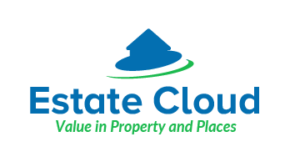
Globally there is growing appreciation for transparency in markets generally, and in real estate no less. Transparent markets are more efficient. Transparency enables market mechanisms to be more accurately responsive to changes in information and data hence increasing the validity of investment actions. Increasingly dynamic markets have raised the levels of risk hence the growing calls for transparency in markets.
The JLL Global Real Estate Transparency Index for 2016 makes mention of the strides towards better transparency in global reals estate markets. According to the report, two-thirds of the markets globally have shown progress over the past 2-years.
The JLL global index ranked countries into real estate transparency tiers as either high, transparent, semi, low and opaque. The ranking placed the United Kingdom, Australia and Canada as the most transparent real estate market in the world, otherwise termed as hyper-transparent, and driven by technological advances and beneficial ownership disclosures among other factors. The five key components of the ranking include performance measurement, market fundamentals, governance of listed vehicles, regulatory and legal aspects, and the transaction process.
In Sub-Saharan Africa, five of the most transparent countries are South Africa, Botswana, Zambia, Mauritius and Kenya respectively with Botswana being the most improved. Of these, four of the African countries were ranked as semi-transparent while South Africa was the only African country with a rank of transparent. Most African countries were ranked low transparency or opaque and the least transparent African country was Libya, followed by Djibouti and Senegal.
As in every market, real estate investors place a high premium on transparency. For instance 10 of the highly transparent markets account for 75% of all real estate investments as well as being home to 2000 of the largest public companies, according to the index. These markets are leading in performance measurement, valuations and market fundamentals data and are dominated by Europe, United States and Australia.
Countries in the semi-transparent tier are the most rapidly progressing with respect to transparency due to major structural changes in those markets. The limitations in these markets is mostly the result of a detachment between regulations and enforcement with respect to land use planning, contracts and building codes. Low transparency and opaque markets however have more entrenched challenges including prioritization of economic problems.
Market inefficiencies in real estate are nowhere in the world more pronounced than in Africa where timely and accurate market data is a rare find. However, technology is slowly unveiling the secrets of the real estate sector in Sub-Saharan Africa with improvements in market openness and accountability slowly taking root, yet there is a lot to be accomplished.
In general, market dynamics continue to evolve making real estate markets more transparent amidst the challenges of poor corporate governance, corrupt practices in the market and bland regulatory enforcement. There is reason for optimism because governments, investors, corporates and citizens alike are behind the push for transparency.
Find the full report here: http://www.jll.com/Research/Global-Real-Estate-Transparency-Index-2016.pdf













